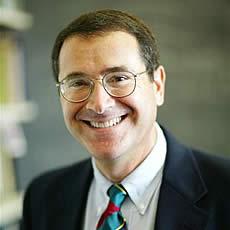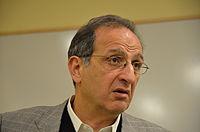An Experimental Entrepreneur
When Paul Van Doren died last month, the New York Tmes described him as a founder of Vans,"the Southern California sneaker company that became synonymous with skateboarding almost by chance and then grew into a multibillion-dollar business." In fact, chance had little to do with it. But like many experimental innovators before him, Paul Van Doren got no respect, because his unobtrusive actions and unassuming personality caused his remarkable achievements to be generally overlooked for much of his life.
Born in Randolph, Massachusetts in 1930, Van Doren dropped out of school at 16, and got a job as a runner at the Randolph Rubber Company. He worked his way up through the ranks, and later wrote that he had spent the first 20 years of his career learning the trade: after working every part of the production line, "I knew everything I needed to know about the art and chemistry of making a quality pair of canvas sneakers."
In 1964, Van Doren moved to Southern California to run a new Randolph factory in Orange County. He soon realized that sneakers were far more popular in California than in the East. But a year later a disagreement with ownership prompted him to quit, and at 35 he was unemployed. What to do? "Making canvas shoes was what I knew best. Hell, making canvas shoes was the only thing I knew." With the support of an investor, he founded the Van Doren Rubber Company in a small warehouse, to make sneakers and sell them on-site.
 Van Doren was adept at converting difficulties into advantages. An annoying problem, that the sticky rubber soles he made adhered to his wrapping paper, proved to help local teens stay on the skateboards that had become ubiquitous during the surfing craze, "so I learned to love the sticky." When his old company pressured box suppliers to boycott Van Doren, he devised a new type of box, made of a single piece of cardboard, that eliminated the tiresome matching of lids to boxes.
Van Doren was adept at converting difficulties into advantages. An annoying problem, that the sticky rubber soles he made adhered to his wrapping paper, proved to help local teens stay on the skateboards that had become ubiquitous during the surfing craze, "so I learned to love the sticky." When his old company pressured box suppliers to boycott Van Doren, he devised a new type of box, made of a single piece of cardboard, that eliminated the tiresome matching of lids to boxes.
But Van Doren's big break came when he got to know two teen-aged skateboarders, Tony Alva and Stacy Peralta, who came into his store. Both would go on to become champions, and to make Vans an integral part of their sport. Van Doren's shoes, with a patterned sole that was much thicker than other sneakers, were more durable for the boarders, who dragged one foot as a brake. And at Alva's urging, Van Doren began to sell one shoe at a time, to replace the brake shoes that wore out more quickly. Eventually, Van Doren invited Alva and Peralta to become involved in shoe design, and Vans began making specialized board shoes, with a padded collar and customized color combinations. When some local teenagers drew checkerboards on their shoes, Van Doren began making sneakers with a black-and-white checked pattern: these gained Vans national fame in 1982, when Sean Penn wore a pair in Fast Times at Ridgmont High.
 Paul Van Doren's success stemmed from his thorough understanding of how to make high quality canvas sneakers, and his flexibility in making practical use of the knowledge he gained from listening to his customers. Time and again he made improvements to his product, but he modestly denied any brilliance: the first sentence of Authentic, his memoir, was "My entire life, I never had one big idea." He eschewed self-aggrandizing rhetoric; far from claiming that he had made a dent in the universe, he consistently maintained that his only goal was to sell high quality sneakers at low prices. And he succeeded because he worked tirelessly to do just that. He eventually sold Vans to a larger corporation and retired, but by then Vans had become one of the world's largest sneaker companies. Paul Van Doren's legacy lies in a famous company, and in his advice to young entrepreneurs to get their hands dirty, and to know what goes into making what they are selling.
Paul Van Doren's success stemmed from his thorough understanding of how to make high quality canvas sneakers, and his flexibility in making practical use of the knowledge he gained from listening to his customers. Time and again he made improvements to his product, but he modestly denied any brilliance: the first sentence of Authentic, his memoir, was "My entire life, I never had one big idea." He eschewed self-aggrandizing rhetoric; far from claiming that he had made a dent in the universe, he consistently maintained that his only goal was to sell high quality sneakers at low prices. And he succeeded because he worked tirelessly to do just that. He eventually sold Vans to a larger corporation and retired, but by then Vans had become one of the world's largest sneaker companies. Paul Van Doren's legacy lies in a famous company, and in his advice to young entrepreneurs to get their hands dirty, and to know what goes into making what they are selling.
















